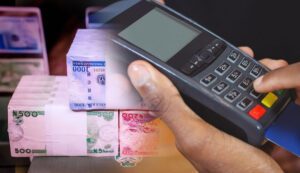Nigeria, others to receive $275bn as IMF commences distribution of $650bn SDRs — MD
Developing countries are expected to receive $275 billion out of the International Monetary Fund’s (IMF) $650 billion Special Drawing Rights (SDRs) to be distributed among member countries based on their quota shares in the IMF.
IMF’s Managing Director, Ms Kristalina Georgieva, said this in a statement on Monday, in Washington DC, while announcing the commencement of the distribution of the SDRs.
According to her, of the $275 billion, low-income countries will receive about $21 billion, which is equivalent to as much as six per cent of Gross Domestic Product (GDP) in some cases.
She described the SDR allocation as a critical component of the IMF’s broader effort to support countries through the pandemic, which includes: $117 billion in new financing for 85 countries.
Others are debt service relief for 29 low-income countries and policy advice and capacity development support to over 175 countries to help secure a strong and more sustainable recovery.
Described as the largest allocation of SDRs in history, Georgieva said that the $650 billion allocation was a significant shot in the arm for the world and, if used wisely, a unique opportunity to combat the unprecedented crisis.
“The SDR allocation will provide additional liquidity to the global economic system by supplementing countries’ foreign exchange reserves and reducing their reliance on more expensive domestic or external debt.
“Countries can use the space provided by the SDR allocation to support their economies and step up their fight against the crisis.
“SDRs are a precious resource and the decision on how best to use them rests with our member countries. For SDRs to be deployed for the maximum benefit of member countries and the global economy, those decisions should be prudent and well-informed,” the IMF managing director said.
Georgieva added that to support countries and help ensure transparency and accountability, the IMF was providing a framework for assessing the macroeconomic implications of the new allocation, its statistical treatment and governance, and how it might affect debt sustainability.
The fund would also provide regular updates on all SDR holdings, transactions and trading – including a follow-up report on the use of SDRs in two years’ time, she said.
“To magnify the benefits of this allocation, the IMF is encouraging voluntary channeling of some SDRs from countries with strong external positions, to countries most in need.
“Over the past 16 months, some members have already pledged to lend $24 billion dollars, including $15 billion dollars from their existing SDRs, to the IMF’s Poverty Reduction and Growth Trust, which provides concessional loans to low-income countries.
“This is just a start, and the IMF will continue to work with our members to build on this effort,” Georgieva said.
She added that the IMF was also engaging with its member countries on the possibility of a new Resilience and Sustainability Trust, which could use channeled SDRs to help the most vulnerable countries with structural transformation, including confronting climate-related challenges.
According to her, another possibility could be to channel SDRs to support lending by multilateral development banks.
Nigerian NewsDirect, reports that the SDR is an international reserve asset created by the IMF to supplement the official reserves of its member countries.
The SDR is not a currency but a potential claim on the freely usable currencies of IMF members and as such could provide a country with liquidity.
It is defined by a basket of currencies that include the U.S. Dollar, Euro, Chinese Yuan, Japanese Yen and the British Pound.




